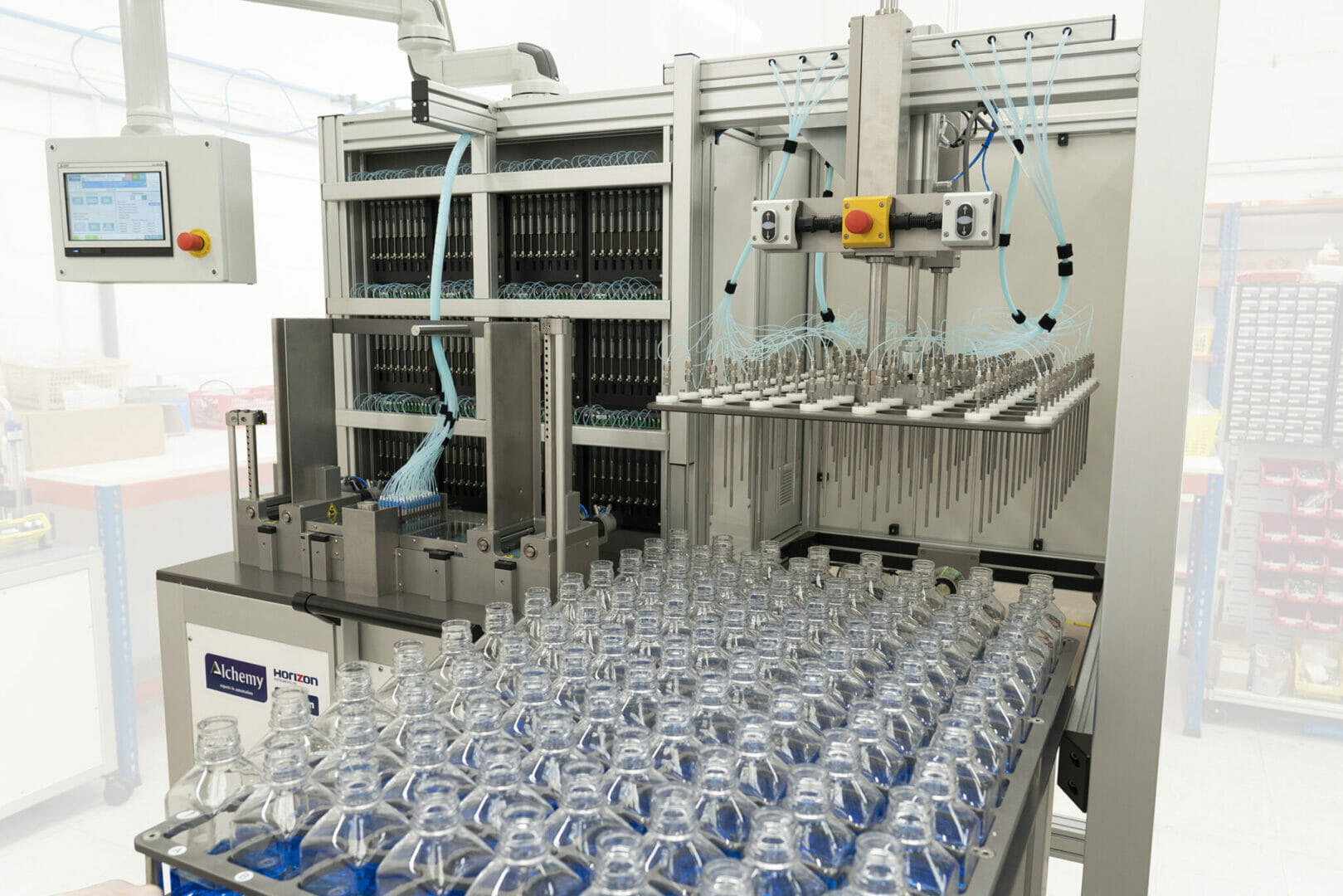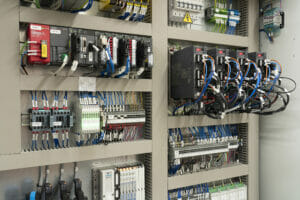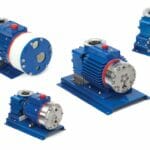Mitsubishi Electric has supported Horizon Instruments in the development of a highly automated well plate filling machine. The solution has boosted operations for a leading provider of immunoassays and in vitro diagnostic (IVD) devices, increasing production yield by 700-800% and is projected to cut waste by half. Machine control is handled by a MELSEC-L series PLC with a built-in motion module connected to Mitsubishi Electric servo motors and amplifiers. The machine also features other system-matched components, such as a GOT2000 series HMI and an optional MELFA articulated arm robot.
Well plates are a must for clinical laboratories where bioassays are used for high-throughput screening and IVD. In these situations, reproducibility, precision and accuracy are fundamental to create a stable and reliable system that allows clinicians to correctly interpret the results.
To thrive in such a challenging market, well plate kit manufacturers need to be ahead of the curve, implementing dependable innovative solutions to deliver high volumes of accurately filled assay containers. In line with this winning approach, one of the major players in the market for disease and allergy diagnostic assay kits wanted to invest in an automation solution, upgrading its multichannel well plate filling system.
Reinventing automated well plate filling operations
The existing unit had been in service for 15 years and had recently started experiencing a number of issues that were affecting productivity and efficiency. The system was prone to overfilling the wells, causing liquid spillage and at one point the manufacturer could only fill half of the 96 wells within one plate at once. As a result, the process was substantially slowed down and could only deliver 600 plates per day.
The technology behind it was also obsolete and several replacement parts were no longer available off the shelf, leaving the factory exposed in case of equipment failure. In addition, the system could no longer offer the level of flexibility that the plate-based assay provider needed to support its customers. The unit did not offer plate stacking for example which was done manually. Within a plate, it could only fill all 96 wells with the same liquid, without offering the possibility to accurately dispense different substances onto one plate.
To develop a new, bespoke solution, the company contacted Horizon Instruments, an expert in the design and manufacture of instrumentation and automation. Horizon then turned to its preferred process automation vendor, Mitsubishi Electric, to source key automation components and plan an effective solution together.
Daniel Bolton, Technical Director at Horizon Instruments, comments: “We were keen to use Mitsubishi Electric’s range of automation products as we always find them to be very reliable, robust and cost-competitive. The company also has a good level of stock, which supports quick turnaround times and we appreciate its responsive and expert customer service. Not many businesses in our opinion – including other large, global enterprises – are able to offer the same level of service.”
State-of-the-art motion control for accuracy and speed
The innovative well plate filling machine revolves around four of Mitsubishi Electric’s MELSERVO-JE servo motors and their associated servo amplifiers, connected via a high-speed, noise-immune SSCNET III/H fibre-based network. These load empty well plates from a stack (input station) onto a walking beam transfer system, which moves towards the filling station. There, the plate is aligned with a movable nozzle head that connects each of the 96 wells with a filling nozzle. The latter receive the necessary volume of liquid from a specific input bottle. Once liquid dispensing is complete, the plates are transported to the output station and safely stacked on top of each other.
The motion performed during these different operations is controlled by Mitsubishi Electric’s MELSEC-L series PLC to ensure accurate speed and positioning. This is a compact and flexible solution that can control different networked stations. Jeremy Shinton, Modular PLC Product Manager at Mitsubishi Electric, explains: “We chose the L series PLC because it could effectively handle the high level of complexity that characterises the current application as well as support any expansion of the unit in the future.”
The system also communicates with a GOT 2000 HMI, through which operators can select the correct recipes and the liquid volume that should be dispensed into the wells (this ranges between 0 and 250µL) as well as monitor the process in real-time. If the system stops, the HMI also provides key information to help operators resolve the issue and restart the machine as quickly as possible.
An integrated system with the power to evolve
The seamless integration of PLC, servo motors and servo amplifiers ensured a fast filling speed, high accuracy, repeatability and precision, despite the low volumes being processed. As a result, the IVD kit manufacturer could eliminate all the issues associated with overfilling, such as equipment downtime to clean the machine and its surroundings, whilst improving the overall product quality. In particular, the factory expects to reduce waste generation by over 50%.
In addition, the manufacturer skyrocketed productivity. The new machine can now process between 4,000 and 5,000 plates per day, a volume that is 7-8 times higher than the existing system even when it was working at full capacity.
Even more, the set-up created by Mitsubishi Electric and Horizon Instruments is flexible enough to scale up and support future implementations. For example, it is possible to install robotic arms that can load and unload stacks of well plates or collect samples for quality control purposes.
Daniel Bolton comments: “We are extremely happy with the outcome of the project. The bespoke, highly automated solution we have developed together with Mitsubishi Electric is ideal for forward-looking manufacturers that want to deliver high-quality products in a very efficient and reliable manner.
“We wouldn’t have been able to succeed without the support from Mitsubishi Electric. Its skilled and experienced teams were crucial throughout the entire project, from concept and planning to installation, commissioning and start up.”
Jeremy Shinton concludes: “We are proud of having played a part in developing such an innovative well plate filling machine. This success attests to the quality of our products and services, even for highly regulated industries, such as pharmaceutical and life sciences.”










